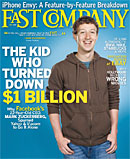With all of the hype surrounding Twitter, I just had to write about it. For those of you unaware of Twitter, it is a minute by minute, second by second updater that you can post to via SMS or the web. It's popularity really grew after the SxSW film festival about a month and a half ago, and its been growing ever since. There have been some Twitter clones out there, like a Facebook or Bebo, however Twitter seems to have rapidly become its own verb in a very short amount of time.
The sign that Twitter has made it to the big time is the new Barack Obama account that is a featured Twitter member. While Barack is the most Web 2.0 ified of presidential candidates (he has his own social network, YouTube, MySpace, etc), something about Twitter is extremely compelling. Unlike Facebook's automatic updates, Twitter allows you to write about something when you WANT to write about it and be able to broadcast this to the world (or your subscribers).
So you're probably thinking "Why would I want to know what you are doing at all times?" From a personal perspective, you probably wouldn't. (You definitely wouldn't.) However, from a brand perspective and perhaps even from an IR perspective (although this is very far from happening), you might be interested in knowing what is going on and a daily updated blog is simply not enough. Diehard Apple fanatics would be able to know Steve Jobs every thought at any time of the day. Fans of 24 would get to know what "Jack Bauer" was thinking every second of his day. And supporters, or potential on-the-fencers would be able to know what Barack Obama's viewpoints were...every second of every day. Sounds almost too good to be true, and it is, but the point that I want to make here is that as more and more tools come out that are being adopted by mainstream (right now it is the blog), consumers will be demanding more and more usage of it, which means allocating more resources to updating your Twitter / blog /MySpace profile / YouTube channel




























